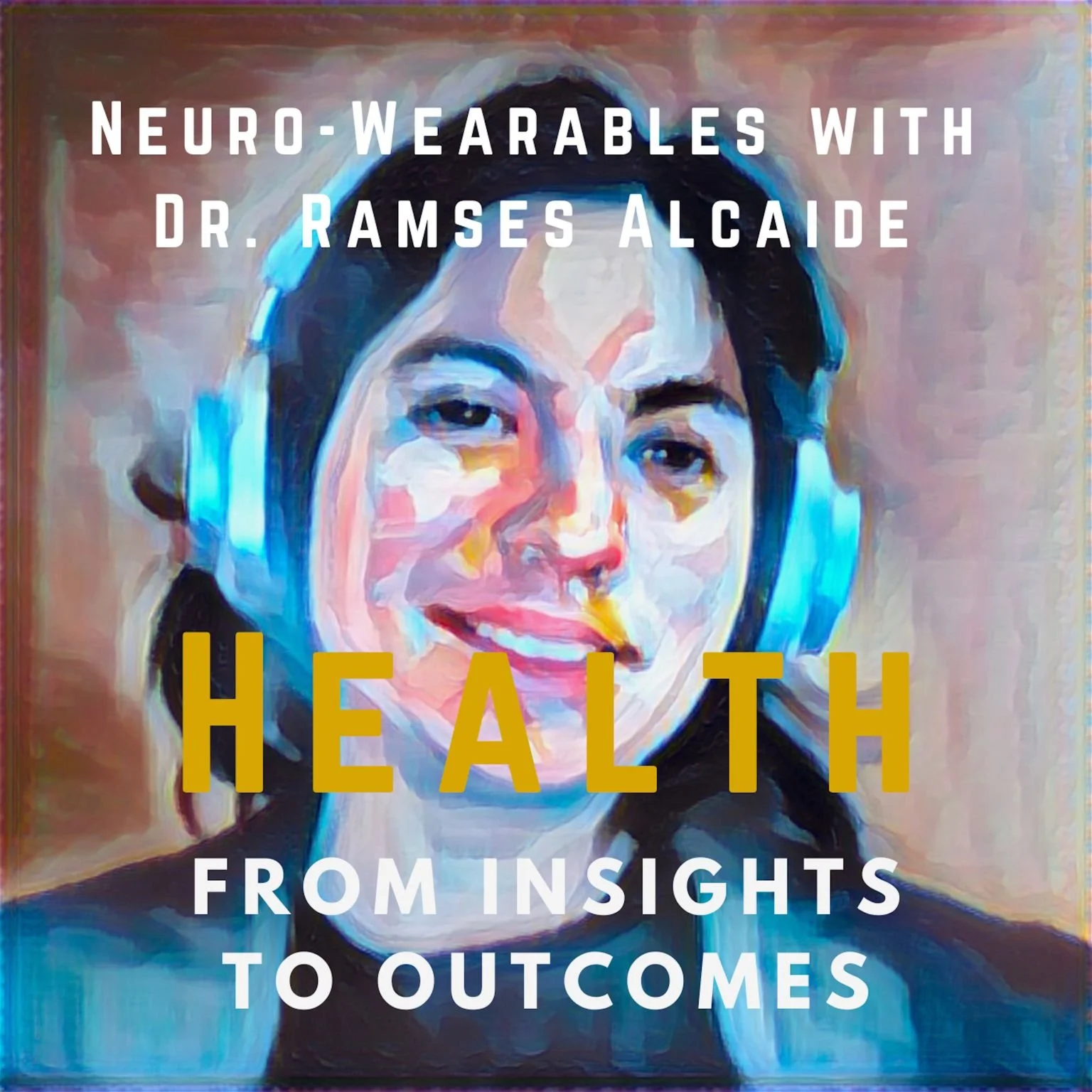Focus on Physicians:
Insights, Ideas, and Strategies
“Doctor, You Just Don’t Have Time for Me Anymore”
“Doctor, I feel like you just don’t have time for me anymore.” My 92-year-old patient Mr. Gray peered at me through his thick glasses, his bushy eyebrows knitted together. Mr. Gray was right. As the constraints of medical practice had tightened over recent years, time had become a limited commodity — and something I had lost control over.
An earlier version of this article appeared on Doximity.com in 2023 where I was an Op-Med Fellow (2022-2023).
“Doctor, I feel like you just don’t have time for me anymore.”
My 92-year-old patient Mr. Gray peered at me through his thick glasses, his bushy eyebrows knitted together. I felt my breath catch in my chest.
Mr. Gray was right. As the constraints of medical practice had tightened over recent years, time had become a limited commodity — and something I had lost control over. I did my best to make the brief encounters that now passed for office visits feel like something more, but a threshold had clearly been crossed.
It had not always been this way. Over the 20 years that I had cared for Mr. Gray, my medical practice had changed almost unimaginably.
We had gone through three iterations of the EHR, each more onerous than the last. Like many other groups faced with the economics of 21st century health care, my large cardiology practice had been acquired by a health care system several years prior. Over that time, we had gradually ceded control.
Several more patient slots had been added to the morning and afternoon schedules, meaning less flexibility for those who needed a little more time. And our scheduling department was in the process of being moved out of our office and into the larger system for the sake of efficiency.
Following our very first encounter when he was hospitalized with a cardiac illness, Mr. Gray had become a regular in my clinic. I was always happy to see him on my schedule. He might have been a little cantankerous, but he was never afraid to speak his mind. And I felt that we had achieved a great partnership.
Despite his age and long list of health issues, his mind was bright. He always asked great questions, and he loved to challenge me, but he was usually willing to accept my recommendations after we had talked things through.
Reeling from the sting of his accusation, I promised Mr. Gray that I would make the time for him. I assured him that he was important to me, and I apologized deeply.
Although I had not created this situation, I was determined to make sure that I repaired it to the best of my ability.
Mr. Gray was not the only one who had noticed this constriction of time, and ultimately he wasn’t the only patient for whom I surreptitiously bent the rules.
But his age and his medical complexity made the idea of what essentially boiled down to far less than 10 minutes face-time patently absurd.
Mr. Gray had the audacity to remind me of my Hippocratic oath. Faced with his rebuke, I felt compelled to go beyond helpless banalities about “the system” and “the computer.”
The current health care system often rewards those who see more patients, spend less time, and generate higher RVUs. A 92-year-old man’s request for physician time might seem inefficient and irrelevant by those standards.
Yet Mr. Gray reminded me of the importance of living up to the principles that had inspired me as a younger and more idealistic physician.
I contacted our scheduling department and cajoled them into placing an alert on Mr. Gray’s chart, noting that two patient slots would be required for his visits. This was not standard procedure, and I knew that it might be considered an inappropriate use of limited office time by the number crunchers in management. On the other hand, as a senior cardiologist, I had worked with the in-house office staff for many years, and my unusual request was granted without question. Mr. Gray understood that I was going to bat for him, and it was clear to me that he appreciated the effort.
From that point on, every visit with him was a reminder of why I became a physician in the first place. Mr. Gray and I were able to discuss his complex health concerns in detail, review the options, and ensure his understanding.
Over this time, I got to know Mr. Gray on a more personal level. An artist since his late 70s, he often brought in paintings that he had made, setting up the examining room as a small gallery. His art would be propped up on the examining table and the desk would be carefully arranged when I walked in. Birds, animals, buildings, historical events — all were subjects that caught his fancy. But he wasn’t only a painter.
Mr. Gray delighted in showing me photos of his raised-bed garden on his smartphone. And over time I learned more about his years in the military and later life as a farmer on the Great Plains. I believe that the trust our relationship created contributed to his longevity.
When Mr. Gray was 95, I decided to retire from my cardiology practice and return to school to study for a fine arts degree in hopes of eventually teaching in the medical humanities. I dreaded having to tell him goodbye.
I checked and rechecked his upcoming appointment, booked for my last month of practice. A few weeks ahead, I saw that a scheduler had moved the appointment to the schedule of one of our practice’s PAs. Although technically this was in line with the practice’s standards, and the PA was very kind and competent, it was not what I had promised Mr. Gray.
By that time, the scheduling department had been centralized and merged with a larger call center serving many different practices. Despite my calls and messages to the scheduling center, the appointment was never moved back to my schedule. Apparently the 30 minutes Mr. Gray required was no longer recognized as a physician appointment by the system.
Nevertheless, I managed to get hold of Mr. Gray that evening by phone. I will always be grateful for that. During our call, I let him know that I would leave him in good hands with one of the other physicians in the practice, and I thanked him for inspiring me.
About six months later, I learned that Mr. Gray had passed away. I was notified when his daughter, whom I had never met, brought one of his paintings to the office as a gift for me.
There may be those who believe this type of care is anachronistic or idealistic. It certainly didn’t optimize revenue, if we look at these longer visits purely from the standpoint of office throughput and RVUs.
But I believe that Mr. Gray’s story is a cautionary tale for these times of metrics and corporate management. When efficiency and productivity take precedence over years of connection and trust-building, we may lose something beautiful and ineffably human. And in the end, the care we provide may itself suffer.
While it may be optimal, offering two blocks of time for complex patients is not always supported by the constraints of the system. Most doctors no longer own their practices, and, as in my experience as an employed physician, they may have little say in the way their schedules are configured.
Fueled by lower reimbursements and a drive for greater profitability, many health care systems demand greater productivity with fewer resources. Meanwhile, the EHR requirements become ever more onerous.
We can’t depend on the systems that control healthcare to make the changes that we seek. It’s up to physicians to collectively lead the way toward making the patient the priority again. No one else shares our unique vantage point, nor our personal investment in the care of our patients. The time we spend with our patients is more than simply interaction and social connection, valuable as that may be.
The doctor-patient relationship is by its nature collaborative. There are tangible benefits to establishing trust. We may unwittingly break those bonds when we are perceived as rushed or pressured.
Patients may not understand the forces that have created these conditions. Instead, they may understandably interpret these experiences as impersonal and incomplete, a failure of the physician to care.
Time is a crucial element that links the science of medicine to the art of practice. As physicians, our strength lies not only in clinical expertise, but in our ability to build meaningful, purposeful connections—channels through which trust, understanding, and optimal care can flow. Without trust, even the most skilled care may be diminished. For patients with complex, overlapping conditions, or those who hesitate to ask questions for fear they'll be dismissed or misunderstood, this connection is a lifeline.
If you’ve enjoyed this article and would like to stay in the loop for more insights on creating a sustainable, fulfilling, and happy life as a physician, sign up for my newsletter or reach out on my website. I’d love to hear from you.
And if you’d like to schedule a complimentary coaching discovery session, click the button below.
Overcoming Disrespect in Medicine: Protecting Physician Dignity
Treating patients with dignity is a fundamental tenet of our profession. Most of us aspire to create a sense of safety and respect for those in our care. Yet the flip side of this equation is rarely mentioned. And the truth is that physicians are often not treated with dignity by their systems or their patients.
In this article, I’ll go over the fundamental changes that have contributed to disrespect for physicians, and give you five strategies you can use to combat the disrespect and reclaim your dignity.
An earlier version of this article appeared on the KevinMD website in August, 2023.
Treating patients with dignity is one of the cornerstones of our profession. While we’ve all had moments when we—or our colleagues—didn’t quite measure up, most of us genuinely aim to make our patients feel safe and respected. But what about the flip side of this dynamic? It’s not talked about nearly enough: physicians are often not treated with the same dignity by their systems or even their patients.
In this article, I’ll dive into the major shifts that have led to this reality and share five practical strategies to help you push back against the disrespect and reclaim your sense of dignity.
The Roots of the Problem: Disrespect and Breakdown in Advocacy
We’ve been conditioned to expect, and even accept, that patients in distress might lash out, but the toll this has taken on physicians in recent years has been enormous. As recently as five years ago there was still a general expectation of respect for the expertise and sacrifices that a physician’s work entails.
But disrespect from patients is currently at an all-time high, sometimes even escalating to physical violence from patients. A recent study found that more than one third of public health workers in the US experience some form of workplace violence. Examples included stigma or discrimination, job-related threats, and bullying or harassment.
Adding fuel to the fire is the rise of administrative oversight of physicians and their practices by people who may have little experience in direct patient care. Their reach extends not only to metrics and billing, but into personal and professional decisions that once would have been completely off limits.
What’s more, employed physicians may have little say into whether threatening patients can be dismissed from their practices.
And at the intersection of patient and administrative stress are the widely published patient satisfaction scores. While these scores often have no relevance to patient outcomes, they’ve become yet another pressure point, pushing physicians to prioritize arbitrary expectations over doing their best work.
Although physicians are tasked with regular training in sensitivity and respect for patients and employees, they get little instruction in how to protect their own dignity. Often physicians are advised to just let it go.
It’s not unusual for doctors, especially women, to attempt to deal with these situations with passivity and even self-deprecation, in a misguided attempt to get along. Younger physicians who lack strong mentorship may be especially vulnerable to these situations.
Unfortunately, these well-meaning attempts to smooth things over often have the opposite effect. They can actually embolden the bully and do nothing to improve the situation.
The status quo is not sustainable, and it is incumbent on healthcare systems to work to create safe and respectful environments. As a physician, you have more power than you may realize. Here are five ideas that you can implement right now:
How to Reclaim Your Dignity
1. Establish Boundaries
Boundaries are essential for maintaining professional relationships and protecting your sense of self. Being a compassionate and caring physician doesn’t mean being a friend to your patients or colleagues.
Keep a clear line between work and personal life—avoid interacting with patients or administrators on social media, and be intentional about separating the two spheres. Setting clear expectations for respectful behavior can help prevent issues before they arise.
2. Advocate for a Respectful Work Environment
If you don’t stand up for yourself, who will? Open discussions about mutual respect—at meetings or through anonymous feedback systems—can pave the way for change.
Remember, you’re not asking for anything unreasonable. Advocating for policies that address disrespect and burnout can help create a healthier, more supportive workplace for everyone.
3. Strengthen Doctor-Patient Communication
Good communication is at the heart of the physician-patient relationship. By being empathetic and respectful in your interactions, you can set the tone for civility with both patients and staff.
Stay calm during difficult conversations—pause, take a deep breath, and step away if needed. Active listening, showing genuine interest in patients' concerns, and involving them in decision-making can help build trust and respect.
And although the EHR is great tool for communication, keeping EHR messages brief and focused can help to maintain your professional boundaries while addressing patient concerns.
4. Don’t Accept Disrespect
Firmly but politely calling out an incident of disrespect can be a first step towards creating a solution. When an issue persists or escalates, document what’s happening—it’s often more effective than just voicing complaints.
But if you feel that your safety or that of your staff is at risk, don’t allow yourself to be talked into accepting a dangerous situation. If you’re employed, your healthcare system bears responsibility. If your concerns are not addressed, sometimes engaging with and reporting to security or even law enforcement personnel is the best course of action to protect everyone.
5. Take Care of Yourself
Prioritize your own well-being. Make time for self-care, whether it’s through exercise, meditation, or hobbies to help you recharge emotionally and mentally. Mindfulness practices can give you tools that help you to stay present, focused, and composed during difficult encounters, preventing potential escalation.
Don’t overlook the importance of making time for your family, friends and loved ones. By nurturing these ties, you will stay connected to the world outside of your practice.
Reclaiming your dignity as a physician will require commitment and fortitude. While it’s crucial to acknowledge the culpability of our healthcare systems, real change will depend on strong advocacy from physicians like you. By starting with the steps above, you can begin to build a workplace that’s not only more respectful but also more sustainable. And ultimately everyone, including the patients you care for, will benefit.
If you’ve enjoyed this article and would like to stay in the loop for more insights on creating a sustainable, fulfilling, and happy life as a physician, sign up for my newsletter or reach out on my website. I’d love to hear from you.
And if you’d like to schedule a complimentary coaching discovery session, click the button below.
References

































